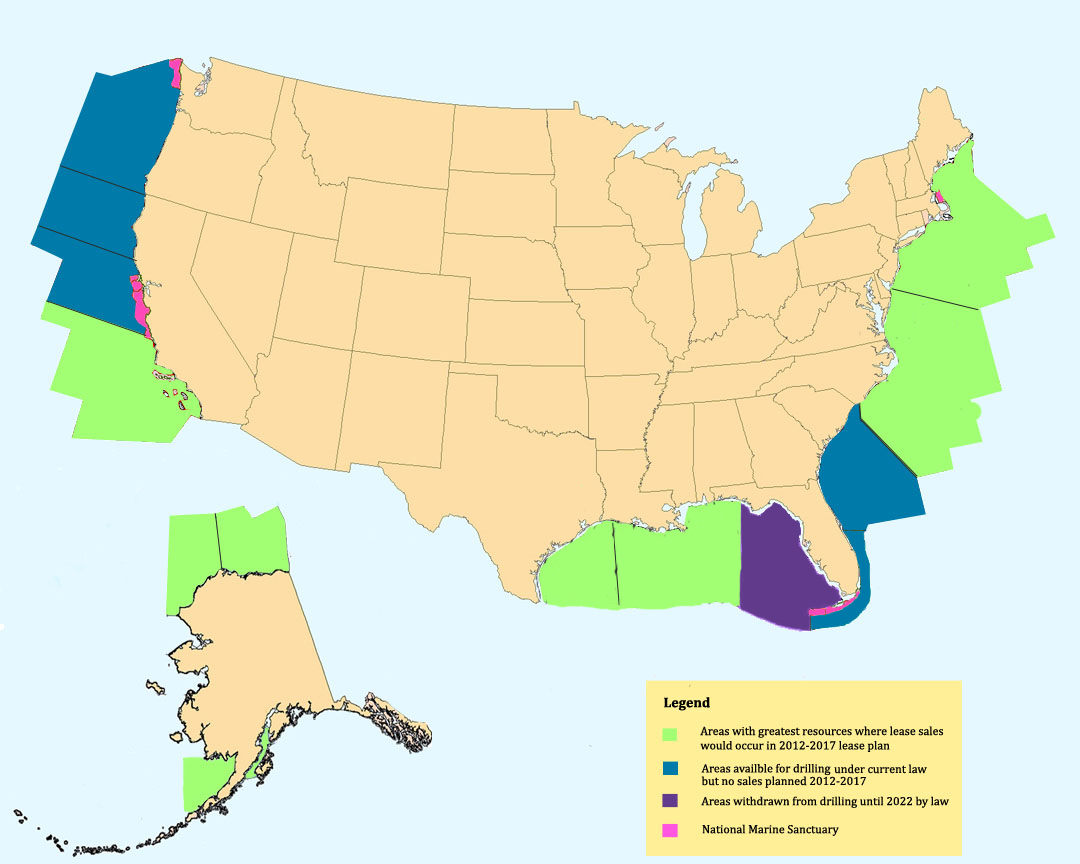On Sunday, the New York Times Editorial Board
rushed to the defense of President Obama who’s feeling the pressure this election season for proposing an offshore drilling plan that keeps 85 percent of America’s offshore areas off-limits to energy production. The President’s plan, under law, is currently undergoing a mandatory 60-day Congressional review. As part of this review, House Republicans will make clear that the President’s plan is unacceptable and Chairman Hastings has proposed a
plan to replace it with an environmentally responsible plan that truly supports increased American energy and American jobs.
While the New York Times Editorial Board has never hidden its disdain for offshore drilling, in 2008 it called lifting the Congressional offshore drilling moratorium “worse than a dumb idea,” its latest attempt to spin the President’s plan as “sensible” also gets key facts and details plain wrong.
“...Mr. Obama has always embraced offshore oil and gas exploration as an important component of a rounded energy strategy.”
From nearly day one, President Obama has blocked expanded access to our offshore energy resources. When President Obama took office, there was a plan in place to conduct lease sales in new offshore areas that were previously under Congressional and Presidential moratoria, which were lifted in late 2008 when gasoline prices climbed to $4 per gallon. Instead of moving forward to vastly increase American energy production and create new jobs, President Obama tossed aside that plan and canceled multiple lease sales.
“The Obama administration’s latest drilling plan, which covers the years 2012 to 2017, would allow 12 large lease sales in the Gulf of Mexico and three smaller, carefully selected lease sales in the Beaufort and Chukchi seas and the Cook Inlet in Alaska.”
The President’s final plan prohibits offshore drilling in new areas and only allows lease sales to occur in areas that have long been leased. The President’s plan effectively re-imposes the drilling moratoria lifted in 2008, hurts job creation and keeps new areas of American energy production sidelined.
“There would be preliminary seismic testing, but no leasing, in the Atlantic.”
President Obama is responsible for delaying and then outright canceling the Virginia lease sale that was scheduled to take place in 2011. The President’s plan doesn’t even include a lease sale in Virginia, which puts the earliest date it could occur at 2017. According to a study, a Virginia lease sale would create 2,000 jobs and produce 750 million barrels of oil, 6.65 trillion cubic feet of natural gas. The Virginia lease sale has bipartisan support in Virginia and President Obama should not be trying to take credit for conducting studies of an area that was supposed to be leased last year.
“Mr. Hastings has unveiled a bill that would allow drilling rigs on the coasts of Maine, California, Oregon and Washington, and in Alaska’s Bristol Bay...”
Chairman Hastings has introduced H.R. 6082, the Congressional Replacement of President Obama’s Energy-Restricting and Job-Limiting Offshore Drilling Plan, to implement a new lease plan for developing the United States’ offshore energy resources over the next five years. This is a drill-smart plan that would replace President Obama’s plan and allows leasing to occur in areas that are known to contain the greatest amounts of oil and natural gas resources. The bill includes 28 lease sales over the next five years, including in new areas previously under moratoria such as Southern California and the Mid-Atlantic.
Under this bill, no drilling would occur off the coasts of Oregon or Washington, as this map clearly illustrates:

“The administration says its plan will give the industry access to three-quarters of America’s recoverable offshore oil and gas resources.”
This calculated and misleading claim is an attempt to provide political cover for the Administration’s failed record on offshore drilling. President Obama’s plan CLOSES 85 percent of our offshore areas to American energy production. Of the 1.71 billion acres in the Outer Continental Shelf, the Obama Administration’s draft plan leaves 1.45 billion acres unleased - 85 percent of our offshore areas.
Furthermore, we don’t know the oil and natural gas potential of new areas offshore until we begin development. The estimates for resources in the Atlantic and Pacific are based on seismic data collected from the 1960s through the 1980s. Using scientific data from decades ago to shape significant energy policy is not only completely unacceptable but shows a fundamental lack of understanding of offshore energy development. The Obama Administration can’t claim we are opening 75 percent of our resources when they don’t even know the true amount of our resources.
“The deeper Republican fraud is the idea that a country with only 2 percent of the world’s oil reserves — and a daily appetite for more than one-fifth of the world’s oil production — can drill its way to energy independence.”
Even President Obama has stopped using this misleading claim that received two Pinocchios from the Washington Post fact checker. The 2 percent figure is a narrow estimate based only on America’s proven reserves – which is the amount of oil that has actually been discovered through drilling. However, the U.S. has huge amounts of oil resources that exist in unexplored areas. Our proven, actually drilled reserves are 28.4 billion barrels, but the oil that exists in unexplored areas is estimated to be over 134 billion barrels. That’s four and one half times as much. Those who use this misleading 2 percent figure are deliberately ignoring the vast majority of oil that we know exists in the United States.
“The conservatives’ assertion that drilling alone is sufficient is not only environmentally irresponsible but the stuff of fantasy.”
Republicans support a true all-of-the-above energy plan that includes alternative sources such as wind, solar, hydropower, nuclear, and geothermal along with traditional sources such as oil, natural gas and coal. House Republicans have passed several bipartisan job-creation bills that would cut government red tape and streamline regulations to renewable energy production.
###
Printable PDF of this document


